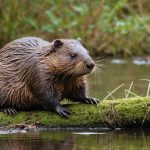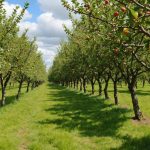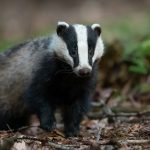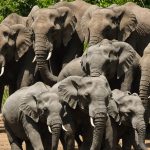Wildlife conservation in the UK relies on the passion and involvement of its citizens. Engaging in citizen science offers an opportunity to contribute to meaningful environmental initiatives. By participating, you can gather valuable data, support local wildlife monitoring, and enhance community awareness. This guide will outline how you can make a difference through practical steps, highlighting your role in protecting biodiversity and fostering a sustainable future. Together, let’s explore how your efforts can lead to impactful conservation outcomes.
Understanding Citizen Science in Wildlife Conservation
Citizen science is a collaborative process where non-professional scientists, or citizens, actively participate in scientific research. This approach is gaining momentum, especially in the field of wildlife conservation. In the UK, initiatives are encouraging citizens to contribute data and observations, which are invaluable for understanding and protecting biodiversity.
Dans le meme genre : The Impact of Beaver Reintroduction on UK River Ecosystems: A Closer Look at Nature”s Engineers
Wildlife conservation faces numerous challenges, including habitat loss, climate change, and declining species populations. Traditional methods of data collection can be resource-intensive and limited in scope. Here, citizen science becomes a powerful tool. By engaging the public, conservation efforts can be expanded, and more comprehensive data can be gathered over larger geographic areas and longer time periods.
Citizens play a crucial role in this process. By participating in projects such as bird counts or monitoring local wildlife, they provide essential data that might otherwise be unattainable. This not only aids researchers in understanding ecological patterns and trends but also fosters a greater public awareness and connection to the natural world.
A lire en complément : Empowering UK Citizens: Ways to Support the Conservation of Traditional Orchards and Their Wildlife Habitats
UK initiatives are leading the way in integrating citizen science into wildlife conservation. These programs not only enhance scientific research but also empower individuals to contribute meaningfully to environmental stewardship. Through citizen science, the collective efforts of individuals can lead to impactful conservation outcomes.
Key Wildlife Conservation Projects in the UK
In the UK, several wildlife projects actively engage citizens in conservation efforts, fostering a collaborative approach to ecological preservation. Among these, the Royal Society for the Protection of Birds (RSPB) stands out. This organization runs projects such as the Big Garden Birdwatch, where individuals across the nation count birds in their gardens. This initiative aids in tracking bird populations and trends, providing valuable data for conservation strategies.
Another notable project is Butterfly Conservation’s Big Butterfly Count. This citizen science initiative encourages people to observe and record butterfly species in their local areas. The data collected helps scientists monitor the health of butterfly populations, which are vital indicators of biodiversity and environmental change.
Conservation organizations like these depend heavily on public involvement. By participating, citizens not only contribute to scientific research but also gain a deeper understanding of their local ecosystems. These projects are designed to be accessible, requiring minimal equipment and time, making them ideal for widespread participation.
These UK wildlife projects exemplify how citizen science initiatives can effectively harness public enthusiasm and commitment to achieve meaningful conservation outcomes. By integrating citizens into the research process, these projects expand the reach and impact of conservation efforts, ensuring a more sustainable future for wildlife.
Steps to Get Involved in Citizen Science
Engaging in citizen science is a rewarding way to contribute to wildlife conservation. To begin, identify a project that aligns with your interests. Many organizations offer various volunteering opportunities, allowing you to participate in citizen science from your local area.
Start by exploring online platforms and local wildlife groups to discover projects. Websites such as the Royal Society for the Protection of Birds and Butterfly Conservation are excellent resources. They provide detailed information on how to get involved, including project descriptions and participation guidelines.
Once you find a project, understand the expectations for volunteers. Most initiatives require a minimal time commitment, making it easy to fit into your schedule. For example, a birdwatching project might only need a few hours of your weekend.
Volunteers are typically expected to collect data accurately and consistently. This might involve noting down observations, taking photos, or using specific apps to record findings. Training and resources are often provided to ensure you feel confident in your role.
By participating in citizen science, you not only contribute valuable data but also gain a deeper understanding of the local environment. This involvement fosters a personal connection to conservation efforts and empowers you to make a tangible impact.
Benefits of Participating in Wildlife Conservation
Engaging in citizen science offers numerous advantages, both personally and environmentally. One of the key benefits is personal growth. Participants often develop new skills, such as data collection and observation techniques, which can enhance their understanding of scientific processes. Additionally, involvement in these projects fosters community engagement, allowing individuals to connect with others who share a passion for wildlife conservation.
From an environmental perspective, citizen science significantly contributes to research and data collection. By gathering data on local wildlife, citizens help scientists track changes in ecosystems and biodiversity. This information is crucial for developing effective conservation strategies and understanding the broader environmental impact.
Case studies illustrate the positive outcomes of citizen involvement. For instance, the Big Garden Birdwatch has provided valuable insights into bird population trends, influencing conservation policies. Similarly, data from the Big Butterfly Count has helped identify areas where butterfly populations are declining, prompting targeted conservation efforts.
Overall, participating in wildlife conservation through citizen science not only benefits the environment but also offers individuals the opportunity to grow personally and contribute meaningfully to their communities. By joining these initiatives, you become part of a collective effort to protect and preserve our natural world.
Success Stories and Testimonials
Citizen science success stories highlight the transformative impact of public involvement in wildlife conservation. These real-life examples illustrate how individuals, regardless of their scientific background, contribute significantly to ecological preservation.
One notable success story involves a group of citizen scientists in Wales who collaborated on a project to monitor local bat populations. Their data collection efforts helped identify critical habitats, leading to the implementation of protective measures. This project exemplifies how citizen science can lead to tangible wildlife conservation achievements.
Testimonials from participants often reflect a profound sense of accomplishment and connection to nature. Many express how their involvement deepened their understanding of local ecosystems and fostered a sense of community. One participant shared, “Contributing to such a meaningful cause has been incredibly rewarding. It’s empowering to know that our collective efforts can lead to real change.”
The impact of these initiatives is measurable. In Scotland, a citizen science project focused on monitoring marine life resulted in increased awareness and policy changes to protect endangered species. Such outcomes demonstrate the potential of citizen science to drive conservation efforts and influence decision-making.
These stories and testimonials underscore the vital role of citizen scientists in achieving wildlife conservation goals, proving that collective action can lead to significant environmental benefits.
The Importance of Wildlife Conservation
Wildlife conservation is crucial for maintaining biodiversity and ensuring the health of ecosystems. Biodiversity, the variety of life on Earth, supports ecological balance by enabling ecosystems to function efficiently. It provides essential services such as pollination, nutrient cycling, and habitat maintenance, which are vital for the survival of countless species, including humans.
However, biodiversity faces significant threats from habitat destruction, climate change, and pollution. These factors contribute to the decline of species and disrupt ecological balance. For instance, deforestation leads to habitat loss, while climate change alters the natural environments that species depend on. Such changes can result in decreased biodiversity and weakened ecosystems.
Citizen science plays a pivotal role in addressing these threats. By involving the public in data collection and monitoring efforts, citizen science enhances our understanding of biodiversity and ecological balance. This collective effort helps identify areas where intervention is needed, guiding conservation strategies to protect natural habitats and wildlife.
Engaging citizens in wildlife conservation not only aids in data collection but also fosters a sense of responsibility and connection to the environment. By participating, individuals contribute to the preservation of biodiversity, ensuring that ecosystems remain balanced and resilient for future generations.
Resources for Further Learning
For those eager to delve deeper into wildlife conservation and citizen science, a wealth of resources is available. These include books, online courses, and digital tools designed to enhance understanding and involvement.
Recommended Books and Online Courses
Books such as “The Sixth Extinction” by Elizabeth Kolbert and “Silent Spring” by Rachel Carson provide profound insights into the challenges facing biodiversity. Online platforms like Coursera and edX offer courses on conservation biology and environmental science, equipping participants with foundational knowledge and skills.
Tools and Apps for Citizen Science Participation
Engaging in citizen science is made simpler with various tools and apps. Platforms like iNaturalist and eBird facilitate data collection and sharing, enabling users to contribute to global biodiversity databases. These apps are user-friendly and provide guidance on how to record and submit observations effectively.
Staying Updated on New Projects and Research
To remain informed about the latest in wildlife conservation, subscribing to newsletters from organizations like the World Wildlife Fund or the Royal Society for the Protection of Birds is beneficial. Additionally, websites such as Science Daily offer updates on recent research findings and emerging conservation projects, ensuring enthusiasts are continually informed.
















